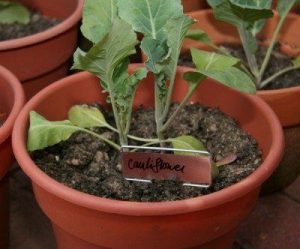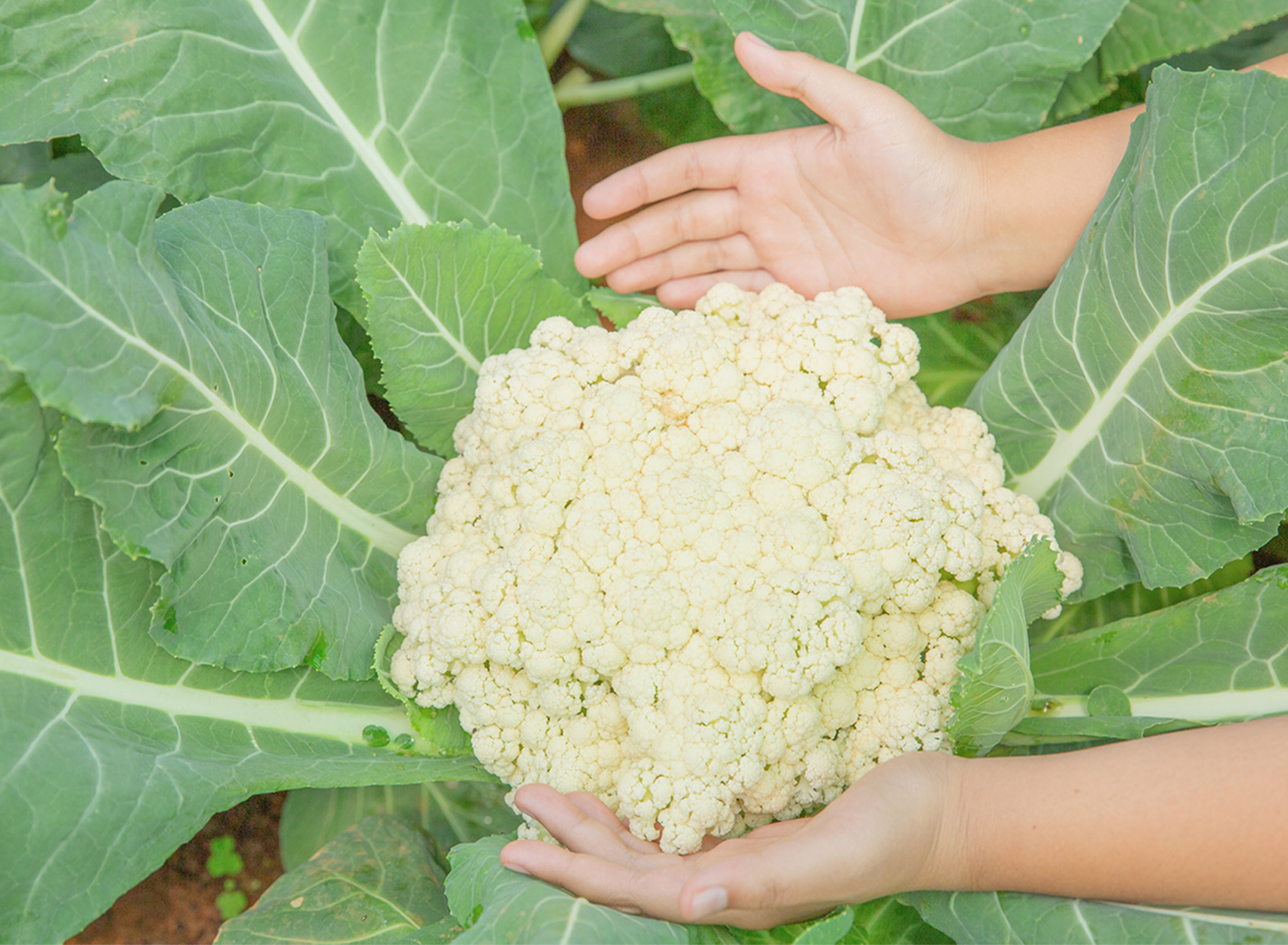Hardy and no fuss, growing cauliflower is a great garden choice for your winter garden. Whether you like your cauliflower drizzled with cheese sauce or raw and crunchy in a salad, it should be a staple in any garden. Although they can grow quite large, their roots are shallow which means that growing cauliflower in a container is possible!
Growing cauliflower in containers is not very difficult if you take care of it’s requirements and expose it to the right conditions.
Although cauliflower does take a little longer from sowing to harvest than some of it’s family members like cabbage, it is worth the wait. Cauliflower can be planted anytime in a frost free climate when the temperature is in the range of 10 C to 25 C, do not exceed these temperatures, cauliflower does not like hot weather.
If you’re sowing your cauliflower from seed, choose a seed raising mix such as Yates Black Magic Seed Raising Mix. Plant seeds 2cm deep and 4cm apart. Once your seedlings have germinated and the plants have several leaves on them, you can move them to a container.
Choosing a container
Your planting vessel needs to be 30cm deep and at least 25cm wide to allow enough room for your plant to grow. Make sure that your chosen container has adequate drainage.
Soil
Like all brassicas, cauliflowers are quite demanding on the soil. Fill the pot with a quality potting soil that is rich, such as Palmers Garden X Potting Mix. As they grow best in moist soil, choose a substrate that holds some moisture but also drains well.
Position
Keep your cauliflower container in a sunny but sheltered spot that ideally receives 6 hours of sun.
Watering
Because growing cauliflower requires moist soil, you’ll need to water it regularly. It is important to prevent the drying of the soil in the period when the seedling is maturing and at the time of head formation. Drought-like conditions lead to the formation of smaller or separate heads or even to a complete loss of them. Over-watering could also impede its growth, try to avoid wetting the foliage whilst watering as this could lead to a powdery mildew. Test by sticking your finger into it the soil, if it feel dry then your cauliflower needs water.
Cauliflower Plant Care
When the head or flower of your cauliflower measures 5-7cm in diameter (this is unnecessary for coloured varieties), cover it with the inner leaves by breaking or tying them over the head. It is called blanching. This will protect the head from the sun and you’ll get healthy white coloured and more flavoursome cauliflower after harvest.
Fertiliser
Cauliflower are heavy feeders. You can mix compost or well-rotted manure into the soil at the time of planting and feed with Tui Novatec Premium Fertiliser. Once a month feed with a seaweed fertiliser such as Tui Organic Seaweed Plant Tonic.
Mulching
Mulching can be skipped when you’re growing cauliflower in containers. But you can do it to keep the soil cool and preserve moisture in the soil. In winter, mulching will keep the soil warm and insulate the roots from colder temperatures. We recommend using Tui Pea Straw Mulch.
Harvesting
Harvesting takes place virtually throughout the year, depending on the variety and sowing period. Generally, harvesting takes place about 3-4 months after planting.
You can check if your cauliflower is ready for harvest when the head is fully developed (15 – 30cm in diameter, depending on the variety) and still compact. Once the blanching is done you can harvest in 7-12 days.
Things to Remember
- Cauliflower heads become ready for harvest in 3-4 months.
- Moderate temperatures are required, around 10-25C is ideal.
- Extreme temperatures can lead to premature heading.
- Cauliflower requires constant nutrient supply and slightly moist soil with ideal pH around 6.5-6.8.
- Correct watering is the key. For the best result, water carefully. Both under-watering or over-watering must be avoided.
















